

James Wong
2026 Nissan Ariya review
3 Days Ago
As a large, sporty-looking electric SUV, the Audi e-tron S doesn't have a lot of competition – at least not yet.
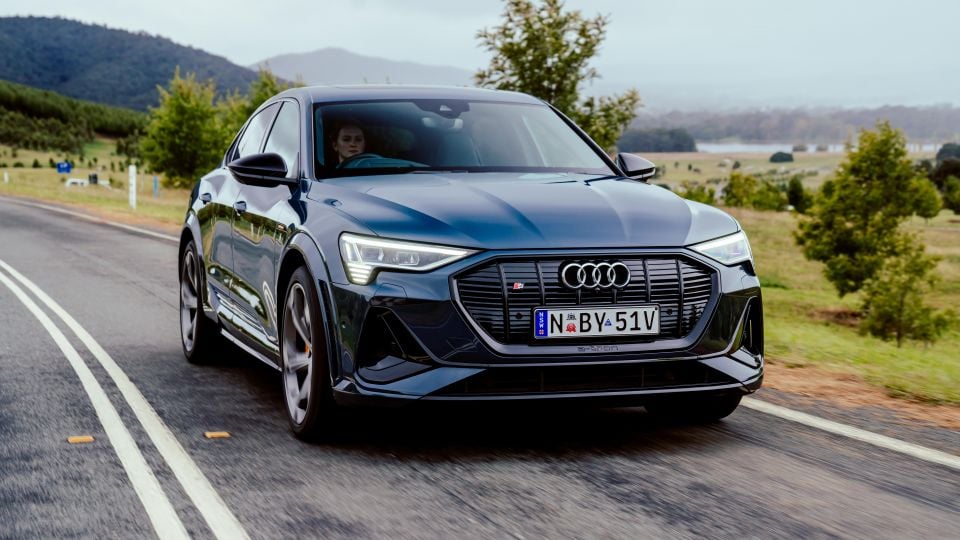


News Editor

News Editor


News Editor

News Editor
Quickly see how this car stacks up against its competition. Select any benchmark to see more details.
Where expert car reviews meet expert car buying – CarExpert gives you trusted advice, personalised service and real savings on your next new car.
We’re watching the mainstreaming of electric vehicles over at Audi, a company that’s already taken a pretty uncontroversial approach to EVs.
In 2019, Audi launched its first electric vehicle, the e-tron, which arrived here the following year. This large electric SUV shares no sheet metal with any other Audi SUVs, and yet it looks right at home next to them.
The Ingolstadt marque didn’t follow the same blueprint as other luxury brand electric trailblazers like the BMW i3 and Jaguar I-Pace when it developed the e-tron.
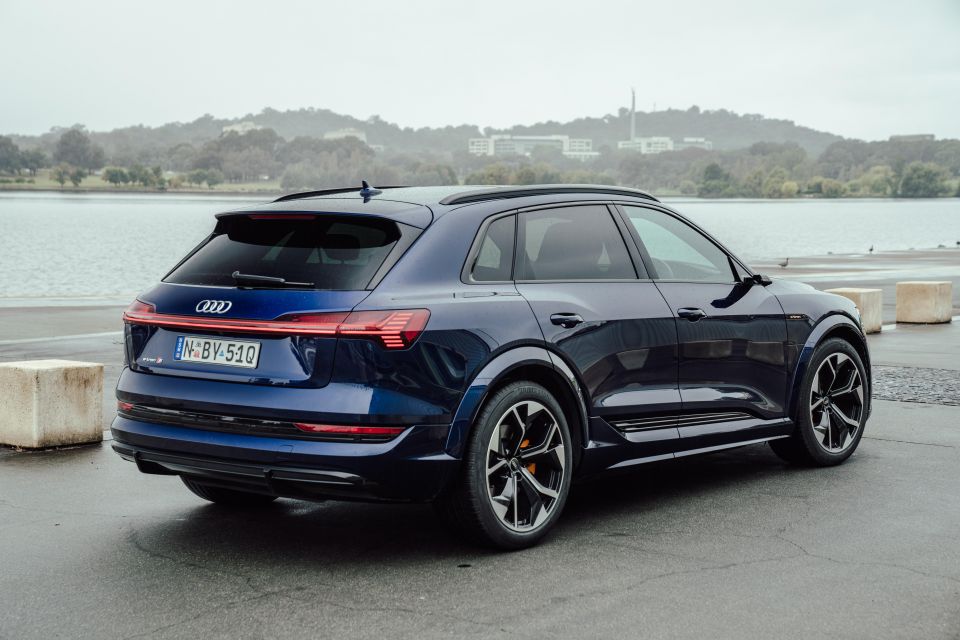
Instead, it took the safe route and developed a large-ish SUV, cloaking it in conventional if handsome styling. That has been subtly enhanced in the new Audi e-tron S, with 23mm wider wheel arches, orange brake callipers, available 22-inch alloy wheels, and an S-specific diffuser.
It’s the first S-badged electric Audi, though the new, more exciting RS e-tron GT is arriving here soon and assumes the mantle of Audi’s first RS-badged EV.
Audi is releasing more battery-powered vehicles, some of which will wear familiar nameplates like A6 as EVs further ensconce themselves in the brand’s line-up.
It’ll soon be the odd one out in Audi’s EV line-up, being that it uses an internal combustion-derived platform instead of a dedicated EV architecture like the Q4 e-tron, e-tron GT, and upcoming A6 and Q6 e-tron models.
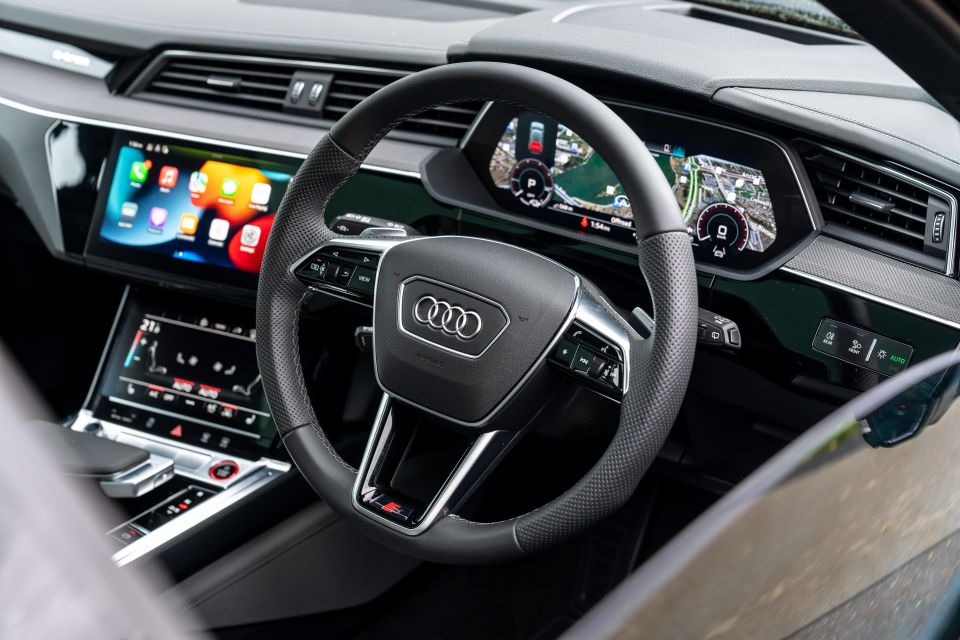
It’ll also find itself wedged somewhat by the Q6 e-tron, due for reveal this year, which will be another two-row electric SUV.
Though the e-tron is now Audi’s oldest EV, it still has some life in it and so it’s received the S treatment with a rare tri-motor electric powertrain, something only found in vehicles like the Tesla Model S and Model X Plaid and Roewe/MG Marvel X and Marvel R.
Audi predicts the e-tron S will account for the bulk of e-tron sales moving forward, though the entire line remains supply-limited as head office prioritises markets with stricter emissions standards.
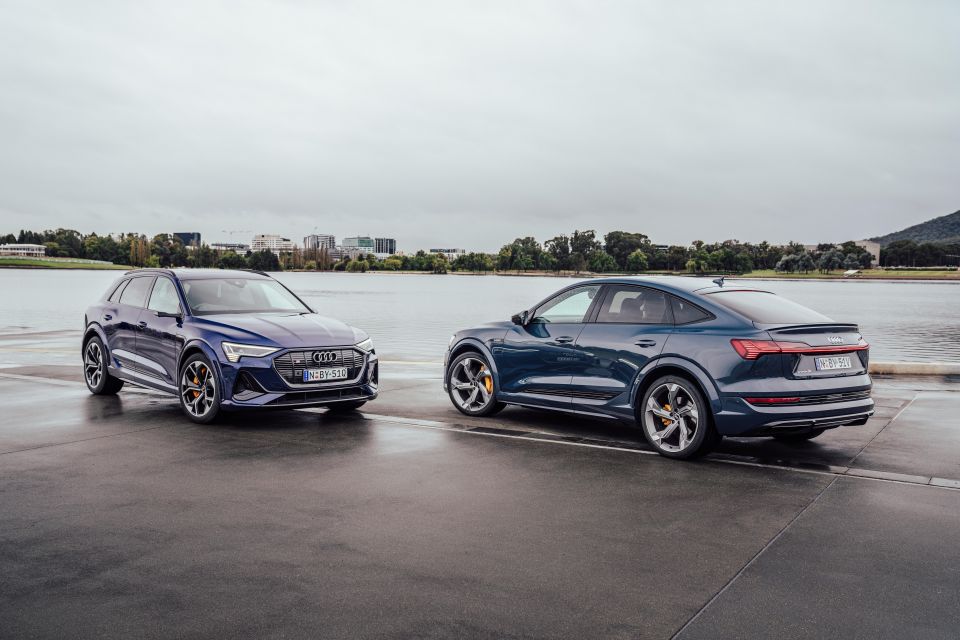
The 2022 Audi e-tron S is priced from $168,400 before on-road costs in wagon guise and $175,400 before on-roads in Sportback guise. That’s a premium of $19,500 and $15,500 respectively over the mid-range e-tron 55.
Our Daytona Grey tester, with an Arras Red interior, included 22-inch alloy wheels ($1600), “carbon square structure” inlays ($1850) and virtual exterior mirrors ($3500). It also included the $9600 Sensory package.
All up, our tester had an as-tested price of $190,325 before on-roads.
We’d like to tell you how much a comparable Tesla Model X would cost, but the American brand has removed pricing and delivery times from its website. A BMW iX xDrive50 Sport, however, costs $169,900 before on-roads, while the smaller Mercedes-Benz EQC 400 4Matic Sport costs $141,300 before on-roads.
A comparable petrol-powered S SUV from Audi, the SQ8, costs $169,600 before on-roads.

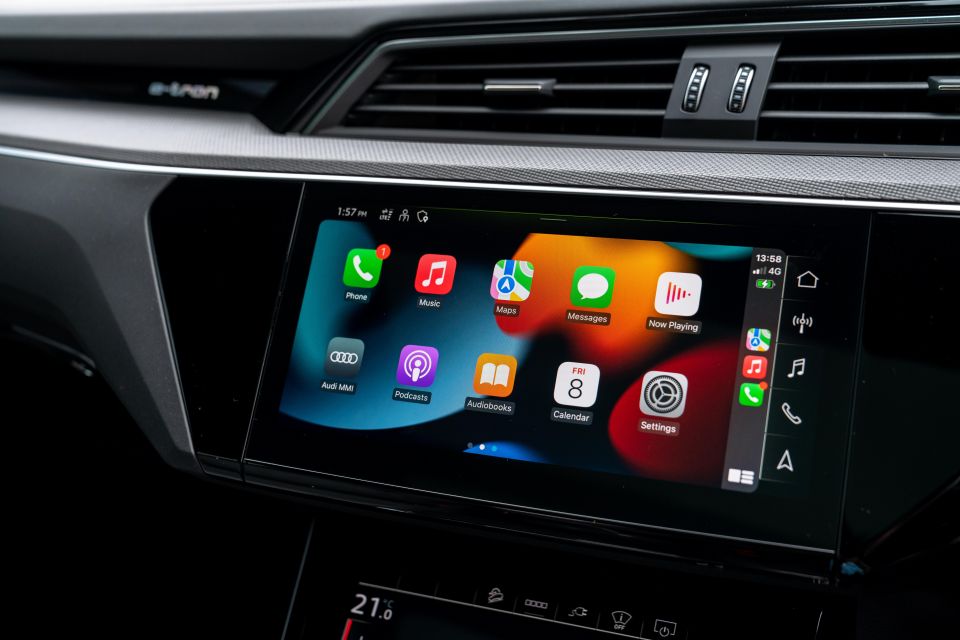
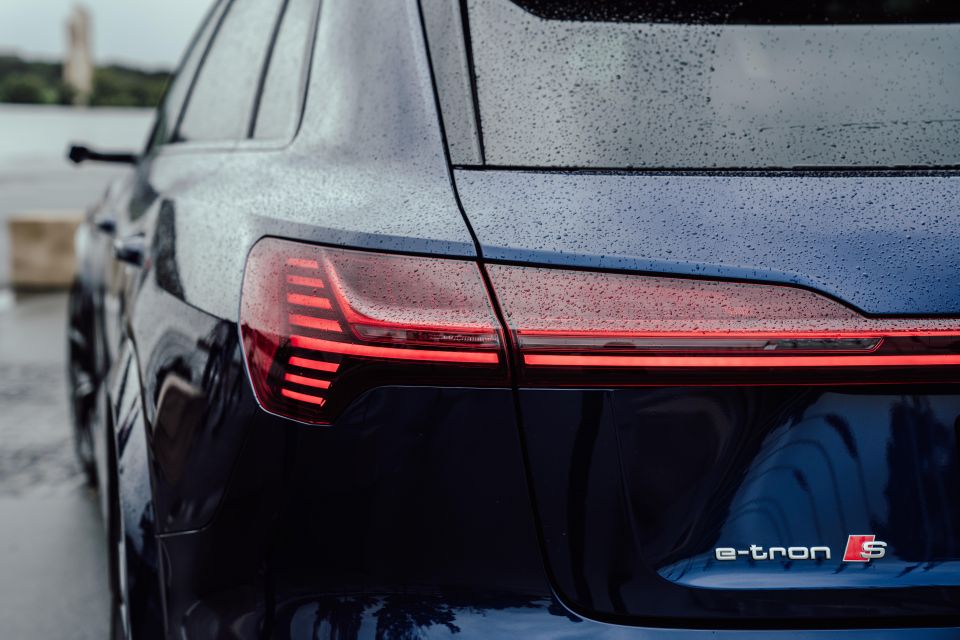
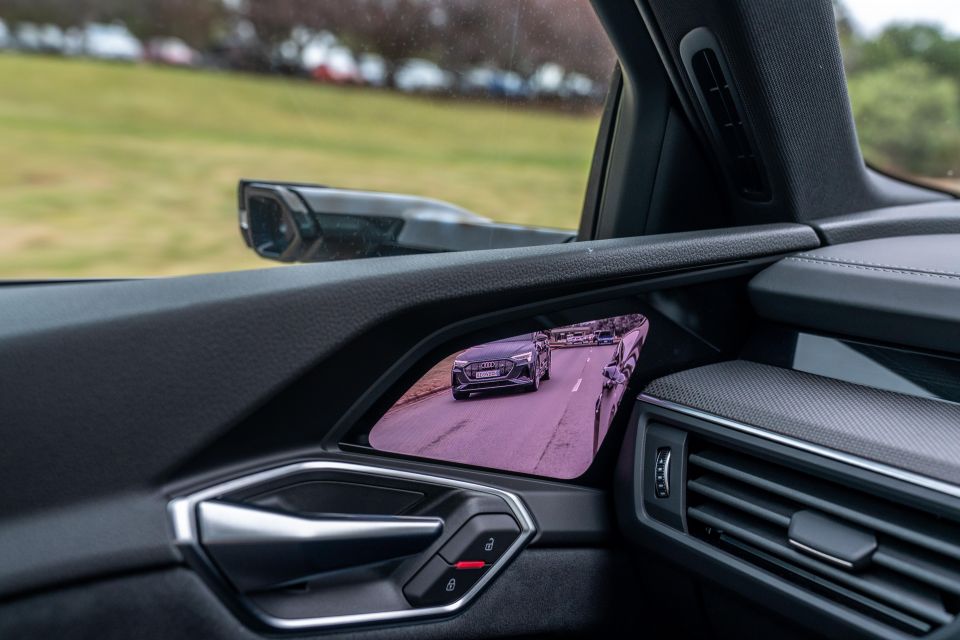
Buy your new car without the stress. It's fast, simple and completely free.

Great service from Travis and team, second time I have used this business would not hesitate to recommend them to anyone
Craig C.
Purchased a Ford Ranger in Sunshine Coast, QLD
CarExpert helped Craig save $7,224 on his Ford Ranger, now let us save you on your next new car.
Get your BEST priceAt the launch, Audi had four e-tron Ss on deck – three Sportbacks and one wagon. All of them were missing the same three features, which Audi says is due to when they were produced.
The omissions included a wireless phone charger (a $481 credit), electric steering column adjustment (-$650) and tyre pressure monitoring (-$494).
Standard equipment in the e-tron S includes:
The optional Sensory package includes:
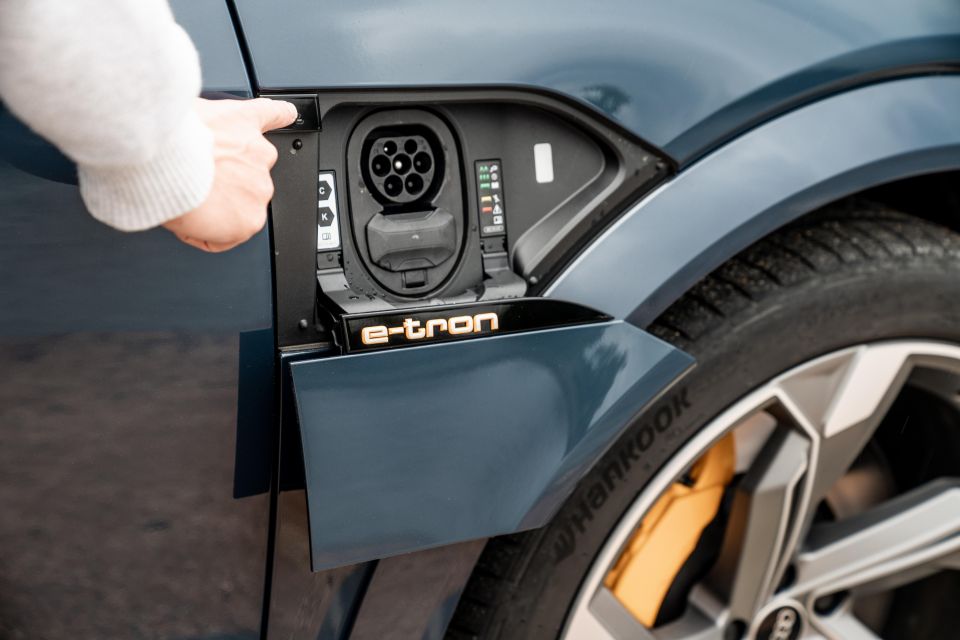
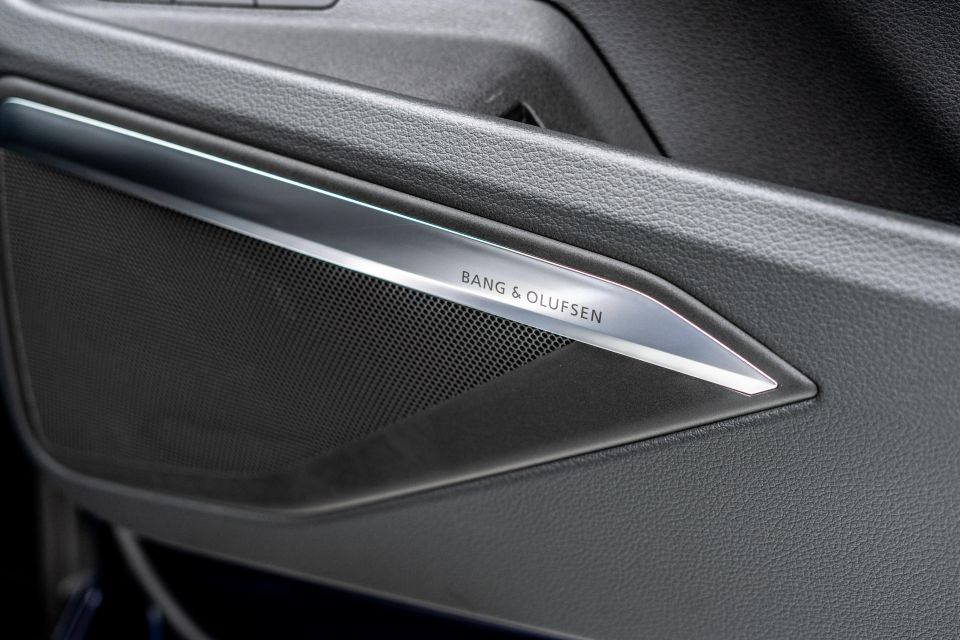
Carryover features from the e-tron 50 and 55 includes:
The wagon and Sportback are essentially identical in terms of equipment, so the $7000 premium you’re paying for the latter is largely for the sleeker body.
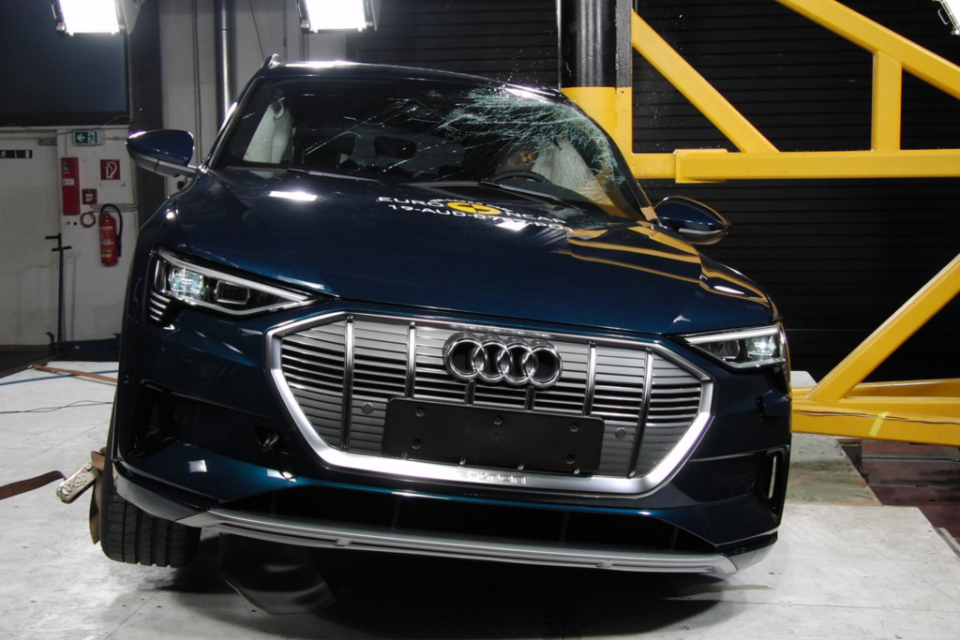
The e-tron has a five-star ANCAP safety rating based on testing carried out by Euro NCAP in July 2019, although the Sportback body style and the S haven’t been tested individually.
The e-tron scored 91 per cent for adult occupant protection, 88 per cent for child occupant protection, 71 per cent for vulnerable road user protection, and 78 per cent for safety assist.
A full suite of active safety features is standard, including:
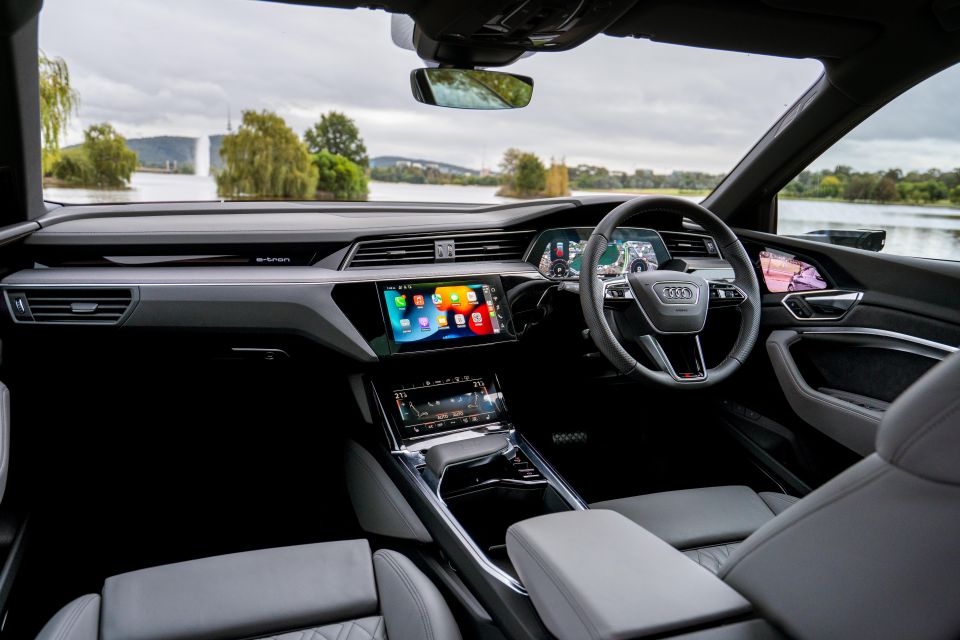
The e-tron S is subtly differentiated from the core e-tron range inside, and the overall ambience is still very Q7/Q8. Like the exterior, then, Audi has been careful not to offend.
There’s a three-spoke, heated ‘S’ steering wheel, as well as S sports seats with diamond stitching, and an S-specific Virtual Cockpit Plus digital instrument cluster display.
The diamond stitching is nice but the front seats don’t feel all that grippier than those in the e-tron 55, and the lack of ventilation or massaging functions is disappointing on a $160,000+ SUV. Audi Australia says ventilation isn’t available with this particular seat design.
As you’ll find in even more expensive Audi models, there’s plenty of gloss black trim – on the sides of the touchscreens, for example, and on the centre console.
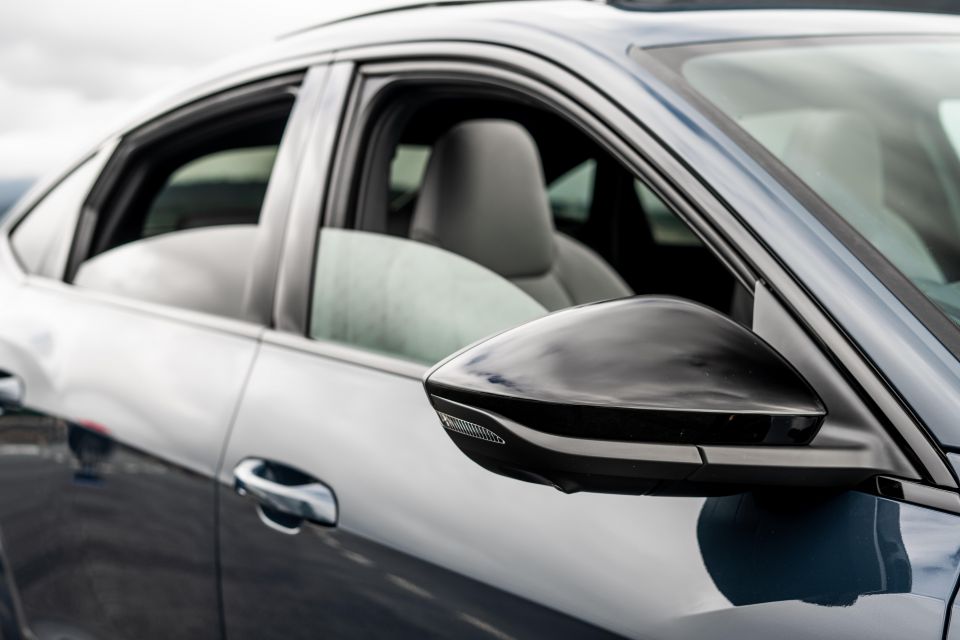
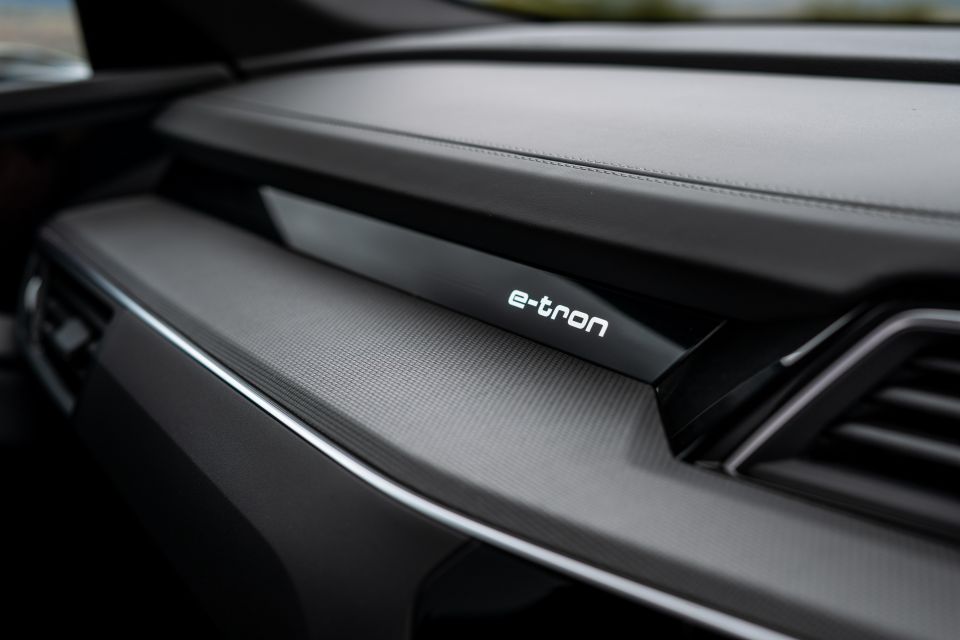


Though our tester had the Sensory package with its extended Nappa leather trim, you’ll still find some hard plastic on the lower reaches of the doors and on parts of the centre console’s sides. Otherwise, most everything is finished in soft-touch trim, whether that be leather or plastic.
Speaking of the lower reaches of the doors, that’s where you’ll find the buttons for the memory seat settings and the power tailgate, tucked almost out of sight.
More intuitively located are the cruise control switches. They’re located on a stalk jutting out from the steering column, easily seen through the steering wheel spokes. It’s one of the best, most logical implementations of a cruise control stalk.
The shifter isn’t as worthy of praise. It’s a weird little toggle of sorts located at the end of what’s effectively a wrist rest, and just feels awkward to use. At least the paddle shifters are more tactile.

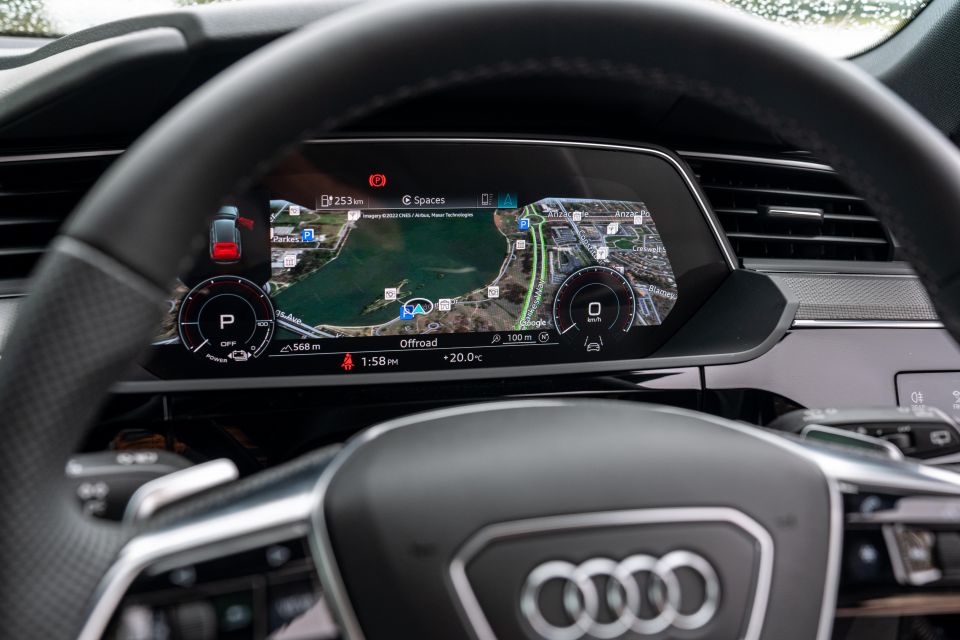
The infotainment system is neatly presented and logically laid out, and the presence of haptic feedback helps to mitigate a common criticism of in-car touchscreens. While we’d prefer physical climate controls, the second display for these settings is intuitive.
Audi’s digital instrument clusters are among the best in the luxury car segments, being easy to configure and allowing you to display maps.
The Google Earth overlay for the maps is neat, if a bit distracting for an instrument cluster. It’s better suited for the main touchscreen, and we also like how the navigation system will prompt you with parking and charging station information when you’re approaching your destination.
The way it works like Google Maps is also laudable. You can pinch to zoom in or out without it thinking you’re trying to add a waypoint, and there’s a re-centre button.

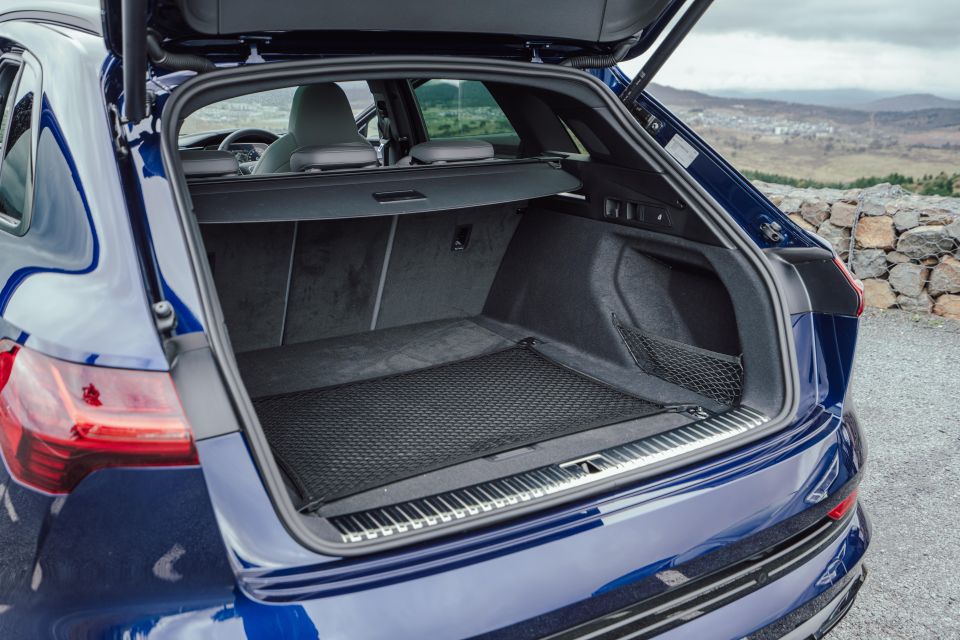
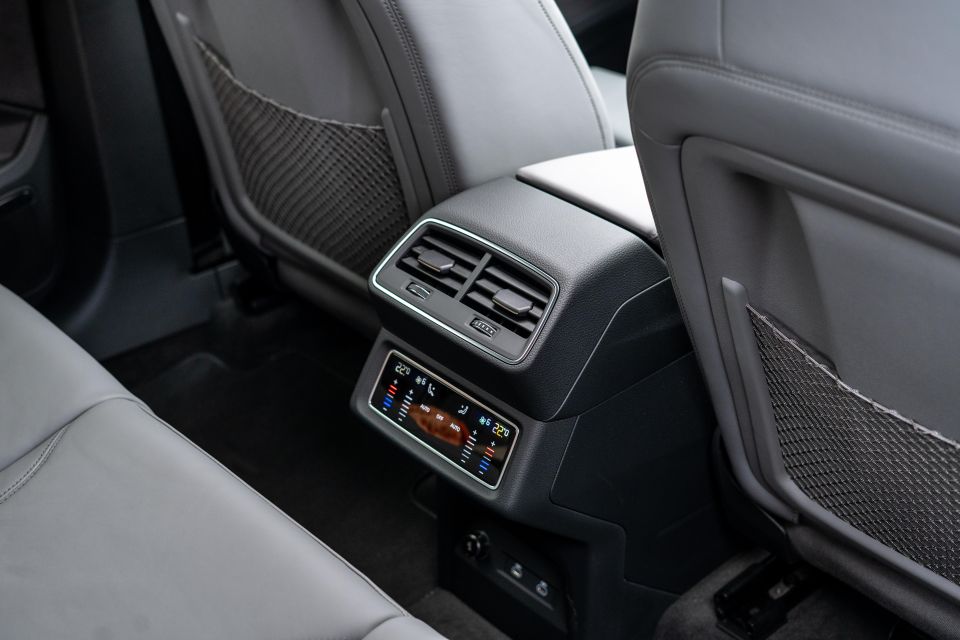
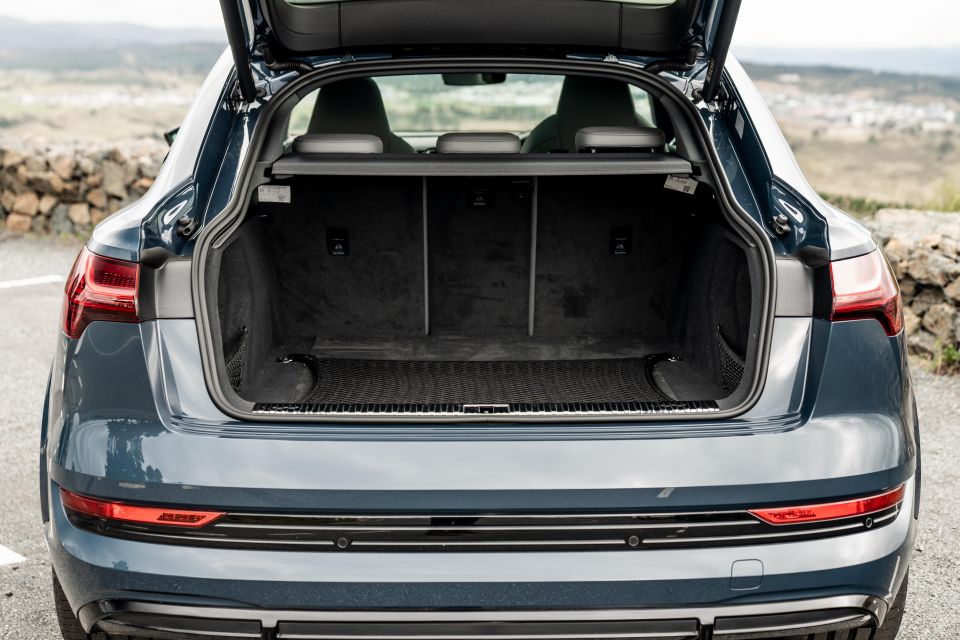
Step into the back and there’s a spacious rear bench, though it’s a touch firm. Legroom is ample, and the Sportback’s more rakish roofline doesn’t impinge badly on headroom – at 180cm tall, I was still comfortable back here, though the wagon has slightly more clearance for your head.
Luggage capacity is unchanged from the e-tron 50 and 55, despite the presence of another electric motor at the rear.
Capacity is therefore 660L in the wagon and 615L in the Sportback with the second row upright, and 1725L and 1665L, respectively, with it folded.
The overall load floor is essentially the same size across both body styles, but the more steeply raked tailgate of the Sportback eats into the load area.
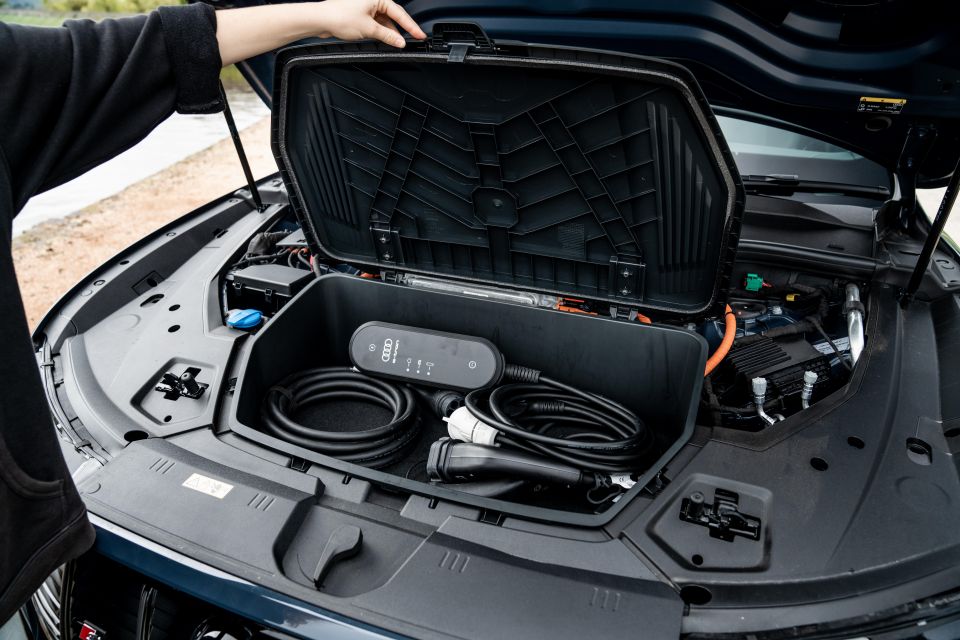
The e-tron S features a tri-motor electric drivetrain with 320kW of power and 808Nm of torque, good for a 0-100km/h time of 5.1 seconds.
If you activate boost mode, however, those outputs get bumped up to 370kW and 973Nm and the 0-100km/h time is cut to 4.5 seconds. This extra power and torque is only available for eight seconds, however.
The front motor individually produces 150kW and 355Nm, while the two rear motors each produce 132kW and 309Nm. The rear motors are mounted with the transmission in one housing, negating the need for a mechanical rear differential, and there’s electric torque vectoring.
The all-wheel drive system is rear-biased. In the default driving mode, 40 per cent of power is sent to the front and 60 per cent to the rear.

The electric motors are powered by a 95kWh lithium-ion battery, as in the e-tron 55, with a claimed range of 413km in the wagon or 418km in the slipperier Sportback – both measured on the more lenient NEDC cycle.
The WLTP figures, typically closer to real-world efficiency, peg the e-tron S range at 344km and 372km, respectively.
An 11kW AC home charging kit is supplied, while the e-tron S can be charged at a DC fast charger at up to 150kW. That means an 80 per cent charge can be completed in 30 minutes, while a full charge will take 45 minutes.
Compared with the e-tron 55, range is cut slightly (from 436km NEDC) but power and torque are up. In the 55, maximum outputs are 300kW and 664Nm in boost mode.
In terms of efficiency, claimed consumption is 26.4kWh/100km in the wagon and 26kWh/100km in the Sportback, up 3.7kWh/100km and 4kWh/100km over the equivalent 55 variants.
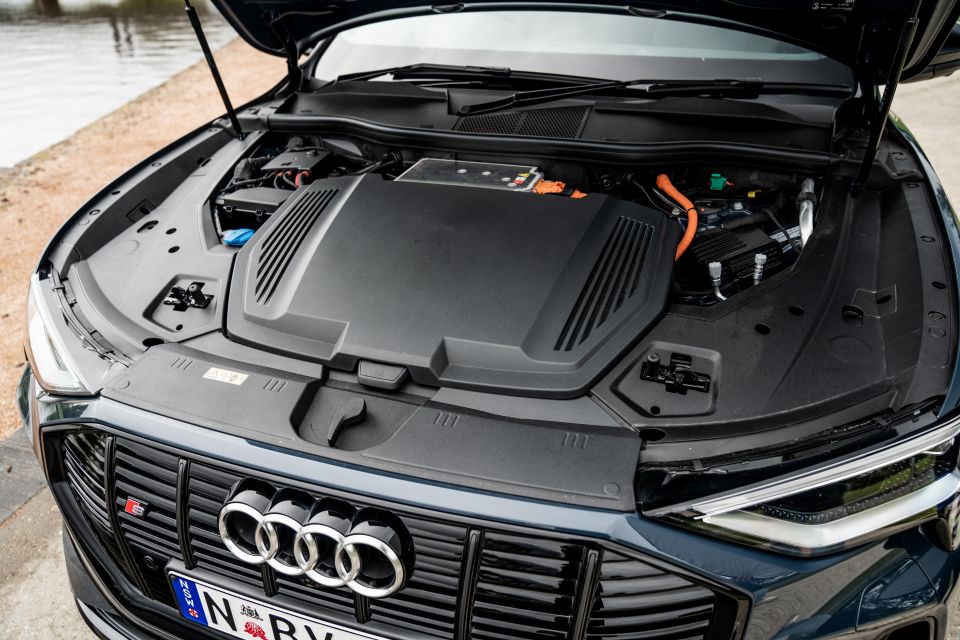
Where expert car reviews meet expert car buying – CarExpert gives you trusted advice, personalised service and real savings on your next new car.
Our drive route took us from Canberra to Cooma, through the Snowy Mountains to a maximum elevation of 1350m, and then over to Wagga Wagga. That meant a mix of highway driving and sweeping curves across hilly terrain, a route Audi itself called ambitious.
Audi topped up the battery at Cooma, with the readout displaying 322km of range remaining. 280km of driving later in Wagga Wagga, we had 57km of range left.
By the end of the almost 400km drive, the trip computer displayed a consumption figure of 26.5kWh/100km, essentially matching the claim.
So, overall the e-tron S is more powerful but less efficient than its mid-range counterpart. But how does it compare with rivals?
The Tesla Model X, of which deliveries appear to have been paused in Australia, produces 499kW of power in Long Range guise and has a claimed 580km of range (NEDC).

In Plaid spec, those figures change to 760kW and 547km, while the 0-100km/h time is cut from 3.9 seconds to just 2.6 seconds.
BMW’s sporty iX M60 arrives mid-year, with a dual-motor powertrain producing 455kW and 1100Nm in its most powerful drive mode. The 0-100km/h claim is 3.8 seconds, and range is 566km on the stricter WLTP cycle.
Even the current iX range-topper, the xDrive50, has more power than the e-tron S at 385kW, with 765Nm of torque, 630km of WLTP range, claimed efficiency of 22kWh/100km, and a 0-100km/h time of 4.6 seconds.
Finally, if you’re comparing sporty Audi SUVs and don’t care what’s powering them, the twin-turbo V8 petrol SQ8 pumps out 373kW and 770Nm and does the 0-100km/h sprint in 4.1 seconds.
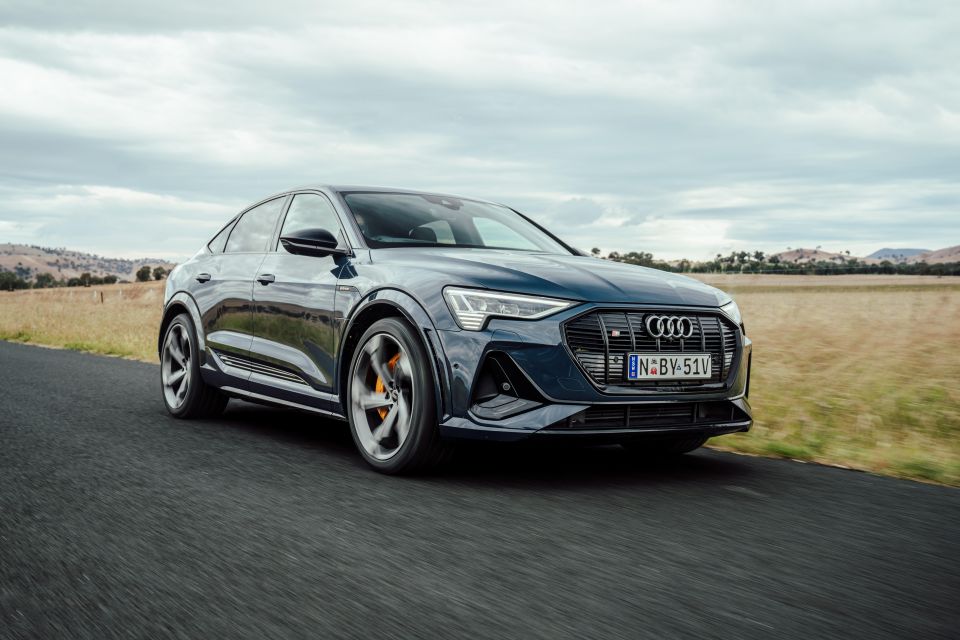
The S treatment doesn’t quite turn the e-tron into a truly sporting sports utility vehicle, and despite all the talk of the tri-motor setup it doesn’t have the dizzying performance of an EV with Porsche or Tesla in its name.
The regular e-tron specialises as a comfortably familiar EV, giving Audi buyers an electric option that doesn’t feel so otherworldly they can’t change into one from their Q7s and Q8s. What the e-tron S does is give Audi EV buyers a slightly more powerful option.
There’s a smooth, linear thrust to the electric powertrain, and there’s still more than enough instantaneous torque to make you utterly blasé about overtaking.
If you are so inclined, you can also take advantage of the boost mode for short bursts of power.
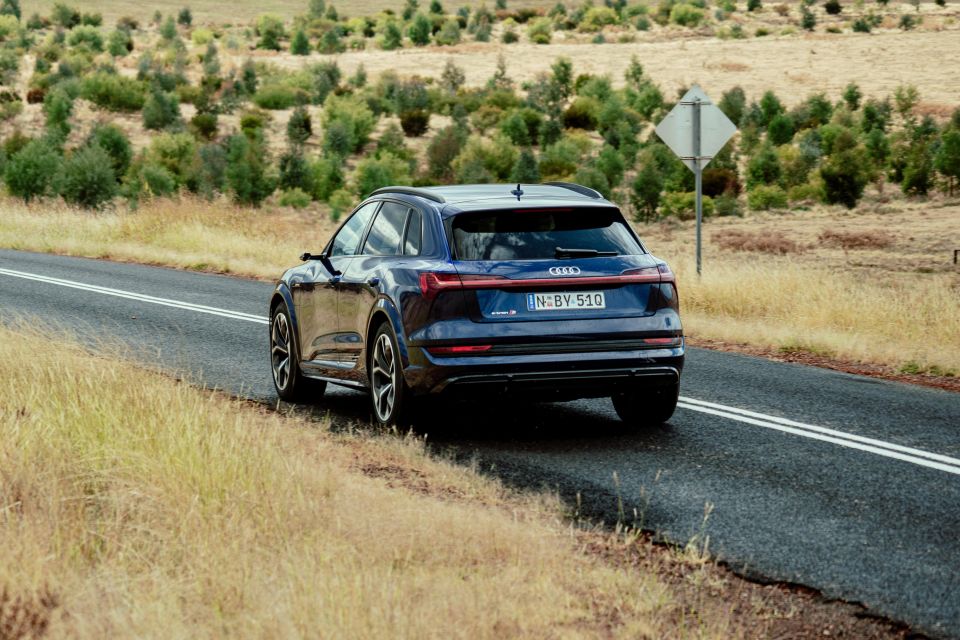
The steering has a surprising heft to it, even in Comfort mode. Its operation is satisfying, and it transmits information from the road – this isn’t some overboosted, underwhelming tiller.
Our drive route consisted largely of long, sweeping curves across the countryside. The only truly tight curves were sabotaged by a slow-moving truck that couldn’t be overtaken. Rats.
It was hard, then, to get a good read on how this large, heavy SUV truly tackles the twisties, though there’s no getting around the feeling of bulk with this Audi. It seems reluctant to change direction at times, and doesn’t feel playful. It does weigh 2830kg (tare), after all.
It feels better sorted as a grand tourer, not a corner carver. There’s plenty of power on tap, and body roll is well controlled. The air suspension will also automatically lower by up to 26mm at higher speeds, though it’s not overtly perceptible.
Ride quality varies little between drive modes. Comfort sacrifices a bit of body control, and it takes fractionally longer to settle on undulating surfaces – conditions the S takes in its stride in other drive modes. But otherwise all modes feature a similarly firm ride, with some faint vibration felt at the wheels.
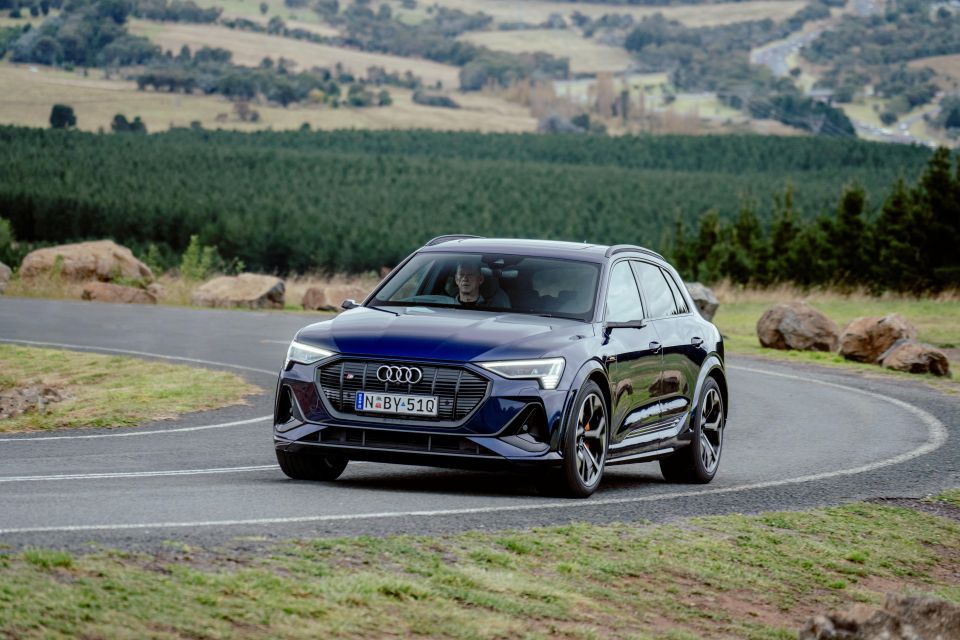
We drove along numerous regional roads with all manner of signs warning of their shoddy finish, and only in two instances did we feel any kind of sharp impact on the cabin, with the Audi otherwise gliding over bumps and ruts.
The price to pay for this pliancy over lousy roads is a consistently firm feel over less pockmarked roads, but it never feels objectionably busy.
Over coarse-chip roads, some tyre roar enters the cabin. But the cabin is otherwise hushed, with little wind noise – the smaller camera pods may help in this respect.
The downside of EV quietness is you can sometimes hear noises an internal combustion engine would drown out. And so it was I noticed the faintest of rattles around the driver’s side A-pillar on coarse chip roads.
It was virtually unnoticeable, and I should note I had the excellent Bang & Olufsen sound system turned off, but it highlights how build quality is even more crucial with EVs as they age.
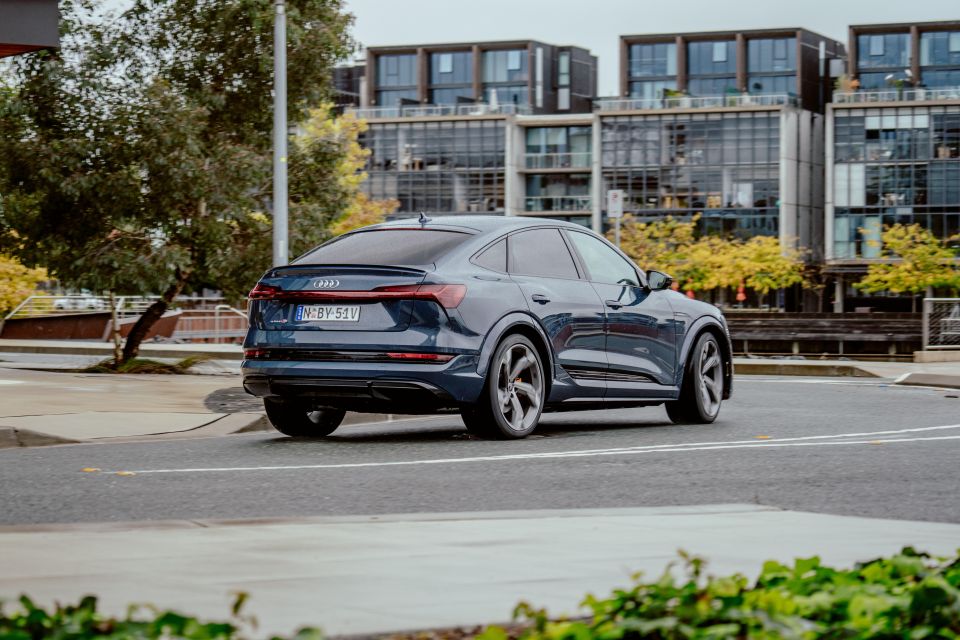
I played around with different drive modes and levels of regenerative braking during the drive, though ultimately a middling level of energy recuperation and the standard drive mode were my preference. There’s an auto recuperation mode, or you can use the paddle shifters to adjust the level.
There’s plenty of adjustability in this car. In addition to Efficiency, Comfort, Auto and Dynamic drive modes, there’s also Individual mode where you can tailor the drive system, the suspension and the steering.
We just wish the modes could be selected via a tactile dial on the centre console or steering wheel, instead of via touch-capacitive buttons and a touchscreen.
The level 2 Adaptive Drive Assist works well, with its lane-centring feeling very fluid and natural and never jerking the steering wheel. It was rarely confused, though it did seem a bit hesitant when one lane would split into two.
A message popped up at one point saying driver assist features were temporarily unavailable, though this came directly after a drive through thick fog. More puzzling was a brief interruption to the adaptive cruise control later on a fairly straight road, though it quickly returned online.
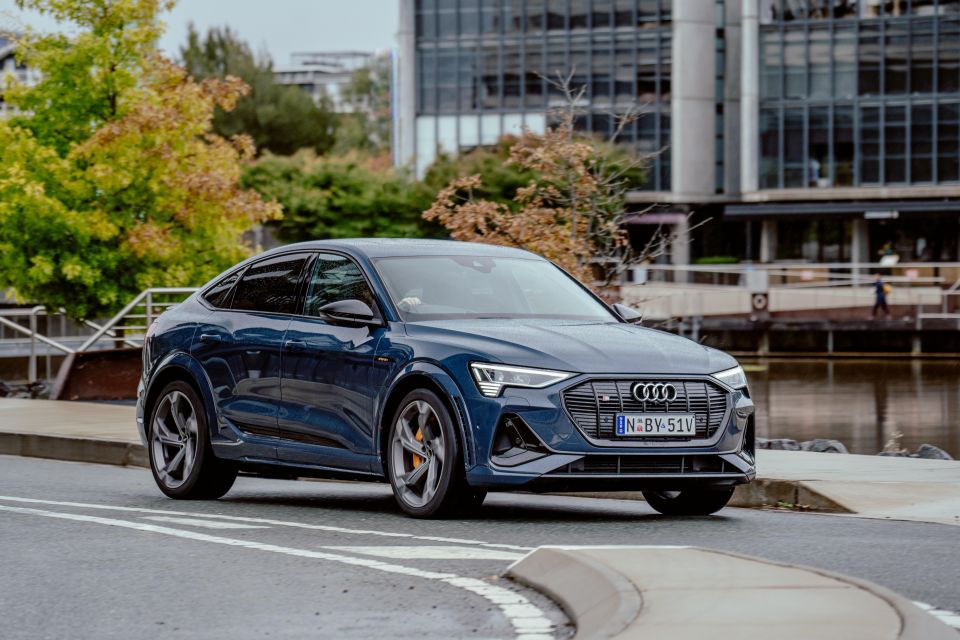
I also received a message a couple of times saying to put my hands back on the steering wheel, even when I had at least one hand on the wheel.
After a day of driving with them, I can confirm you quickly get used to the digital camera mirrors. The displays don’t distract you like a television at a bar, while their yellow perimeter when a vehicle is in your blind-spot is a clever visual cue.
Ultimately, however, they seem to be of dubious merit. An digital rear-view cabin mirror makes sense, as loads can obstruct your view out the rear window, but exterior mirrors? They don’t represent enough of an improvement in aerodynamics or efficiency to justify the cost, and just seem like techno-overkill. Not to mention, even regular mirrors can cost a pretty penny to replace when broken…
We didn’t get a chance to test the digital Matrix LED headlights, which can display a range of animations on start-up and, much more usefully, project lane marking lights on the road to help keep you centred within your lane.

Audi finally moved to a five-year, unlimited-kilometre warranty earlier this year, which further sweetens the pot for buying an e-tron.
The electric crossover already came with six years of free servicing, six years of roadside assistance, and a six-year subscription to Chargefox, Australia’s largest charging network.
In contrast, BMW charges up to $2195 for six years of iX servicing, and only backs it with a lowly three-year, unlimited-kilometre warranty.

Buy your new car without the stress. It's fast, simple and completely free.

Great service from Travis and team, second time I have used this business would not hesitate to recommend them to anyone
Craig C.
Purchased a Ford Ranger in Sunshine Coast, QLD
CarExpert helped Craig save $7,224 on his Ford Ranger, now let us save you on your next new car.
Get your BEST priceThe Audi e-tron is the definition of playing it safe, and even a third electric motor and bright orange brake calipers don’t shake things up too much.
It’s quick without pulling your skin back, it handles well without being a riot to drive, and it rides comfortably without feeling like a magic carpet. In short, it’s hard to fault anything about the way it drives – it’s refreshingly competent and consistent.
Audi also hasn’t styled it like it was a science experiment, with the wagon in particular looking quite handsome. And even though the Sportback is a coupe SUV, a body style known for ugly and disproportioned styling, it still manages to be a handsome beast – almost as handsome as the SQ8, which asks for similar coin.
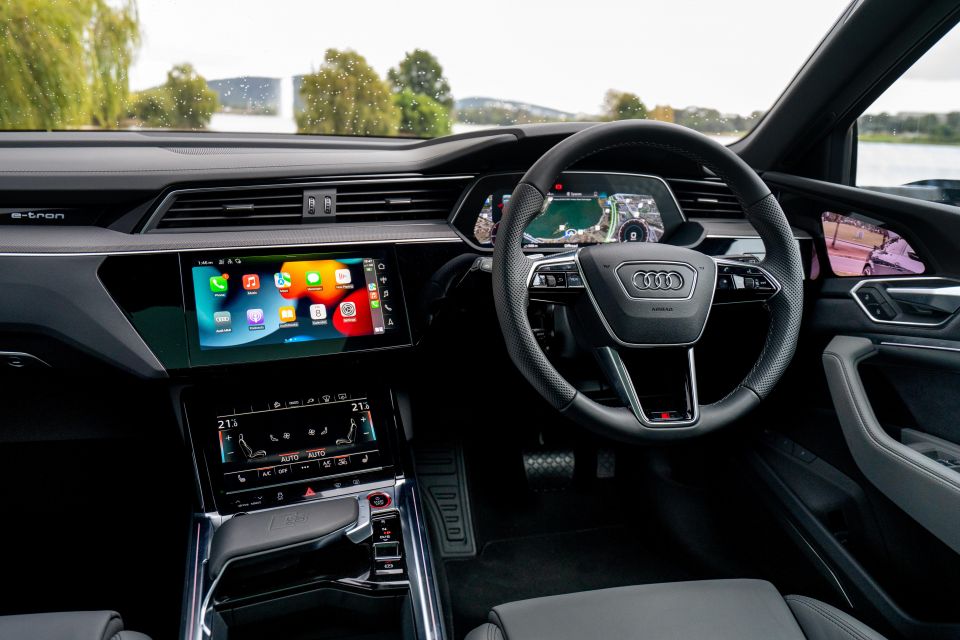
The aftersales package is impressive, with its six years of free servicing and Chargefox charging. Its servicing costs and warranty, in particular, put the BMW iX to shame.
But that rival German, though looking much like a science experiment itself, is more efficient in xDrive50 guise, just as quick, and boasts more range. It doesn’t have quite as sporty a feel, but its cabin is gorgeous – not that the Audi is lacking in the interior department.
Nevertheless, the e-tron S is a powerful, comfortable electric SUV that has that reassuringly familiar Audi feel. And that’ll be just right for a lot of e-tron buyers.
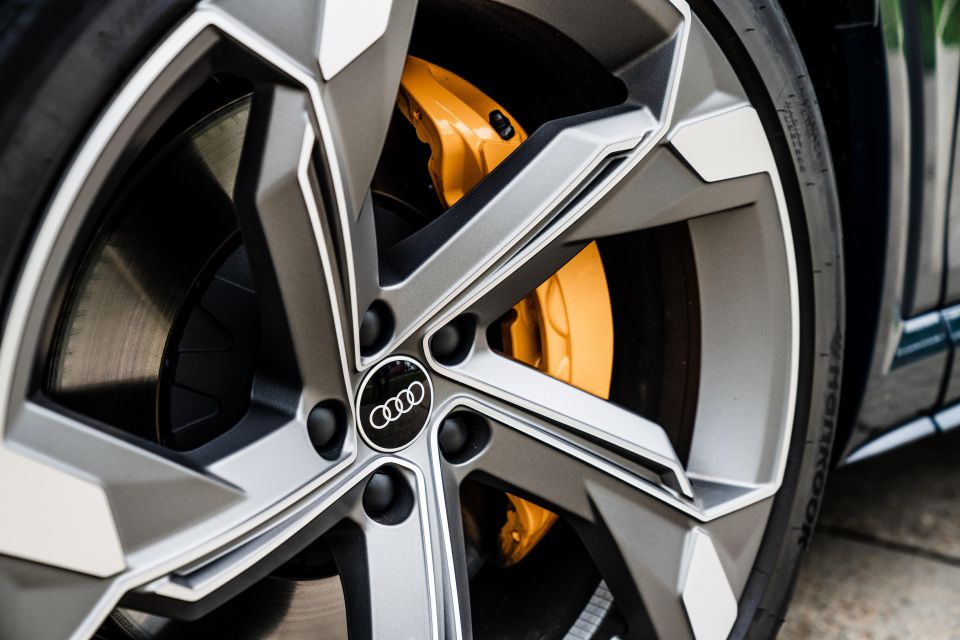
Click the images for the full gallery
MORE: Everything Audi e-tron
Where expert car reviews meet expert car buying – CarExpert gives you trusted advice, personalised service and real savings on your next new car.
William Stopford is an automotive journalist with a passion for mainstream markets and historical automotive pieces.


James Wong
3 Days Ago


William Stopford
3 Days Ago


Josh Nevett
2 Days Ago


Paul Maric
1 Day Ago
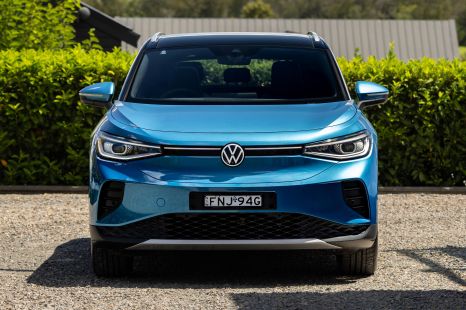

Damion Smy
19 Hours Ago


William Stopford
19 Hours Ago